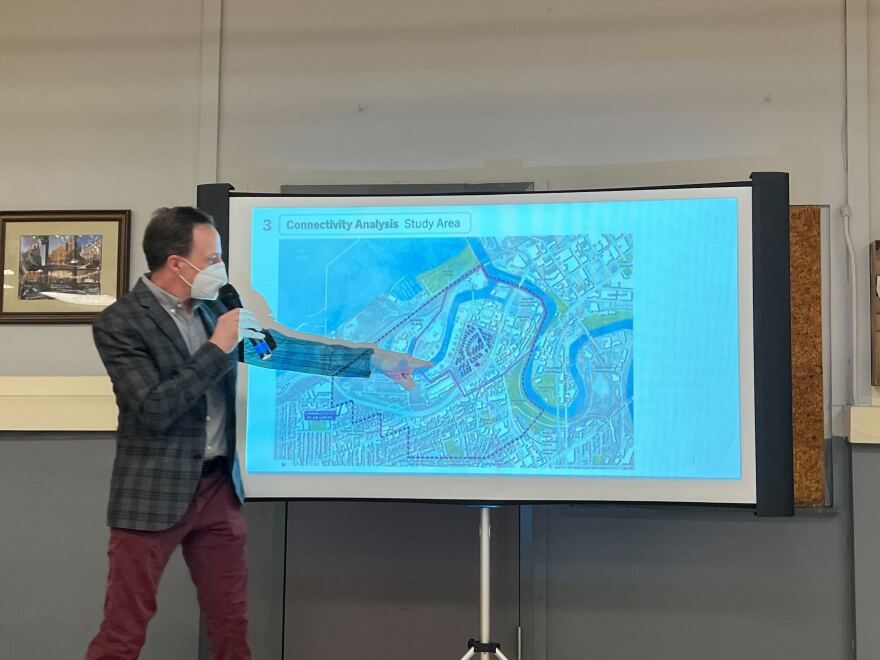In the 26 years Diane Howard has lived in the Lakeview Terrace public housing complex, she’s been exposed to poor air quality caused by the hundreds of trucks kicking up dust and fumes in her isolated stretch of Ohio City.
Howard was among the dozens of residents gathered Tuesday night to discuss proposed solutions for the environmental and safety hazards in the neighborhood, which is largely walled off from the rest of the neighborhood and gets fallout from trucks making their way from Whiskey Island to regional highways.
After decades of inaction, a coalition of neighborhood groups and urban planners have launched a $103,000 study called Lakeview Connects to look at how to better connect Lakeview and locations south of the Shoreway, a freeway built after World War II to connect Cleveland’s east and west sides.
For the first time, Howard said she’s optimistic.
“They’re really trying, and I can see that,” she said. “I’ve always said to the tenants here, 'You’ve got to stand up and fight for what you want.'”
The study is organized by the nonprofit Ohio City Inc. in tandem with the Cleveland-based architecture and engineering firm OHM Advisors.
Matt Hils of OHM talked to a crowd of about 50 people assembled in the Malachi Center Social Hall about the challenges facing the area, including physical isolation, limited access to grocers and retail establishments, lack of infrastructure and environmental hazards caused by heavy traffic.

The goal, Hils said, is to “deconcentrate centers of poverty” while still maintaining affordable housing and providing more connectivity between the neighborhood and surrounding areas.
Despite its challenges, the Lakeview neighborhood touts a variety of natural amenities, including Cleveland Metropark’s Wendy Park, the Towpath Trail and the Centennial Lake Link Trail. Improving connectivity would allow not only Lakeview residents to access the waterfront and parks, but surrounding neighbors to more easily get there without adding to existing traffic problems.
“People who have been living in Lakeview can see Lake Erie and the Cuyahoga River but have not been able to enjoy it until recently, and that’s crazy when you think about equity when it comes to where we live,” said Jim Ridge, an Ohio City resident and founder of Share the River. “Wouldn’t that be something if a spot that people turn their back on became a vector for people to come in and access the river?”
As part of the brainstorming session, OHM invited attendees to move around the room and mark areas of concern on maps and submit potential solutions.

While the groups are still working on gathering information through these community meetings, they are looking to create long-term infrastructure solutions based on feedback they receive, such as rerouting trucks.
“As a kid, I wasn’t really allowed to go to a lot of places because it’s dangerous down here,” said 15-year-old Lakeview Terrace resident Samantha Gallo. “Crossing anywhere is difficult because of the traffic, especially with the trucks making tight turns.”
The possibility of rerouting truck taffic worries some truck drivers who were present at Tuesday’s meeting, like Alex Quinnie who owns a local trucking company.
“We drive through this area every day. … How are we going to get in and out of here if they change the truck route the way we’ve been coming in for years?” he said. “But if there could be some changes where it’s not going to eliminate our jobs, I welcome it.”
Erle Potts, a resident who has lived at Lakeview Terrace for 10 years, said he’s not sure how practical it is to tackle the issues of dust and traffic, but he likes the idea of connecting his residence to Ohio City.
A separate Lakeview master plan study conducted by the Cuyahoga Metropolitan Housing Authority is also currently underway.




